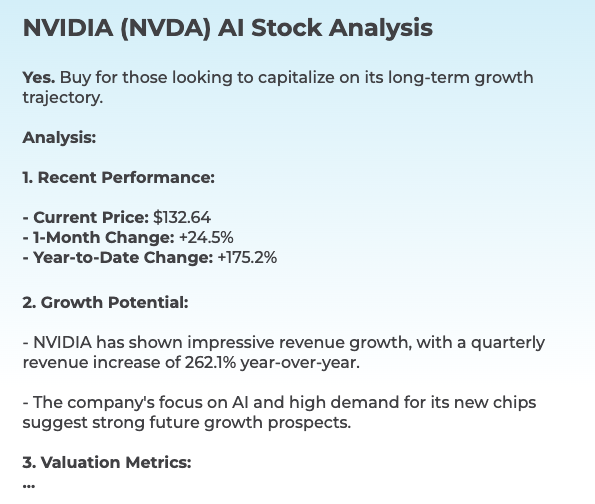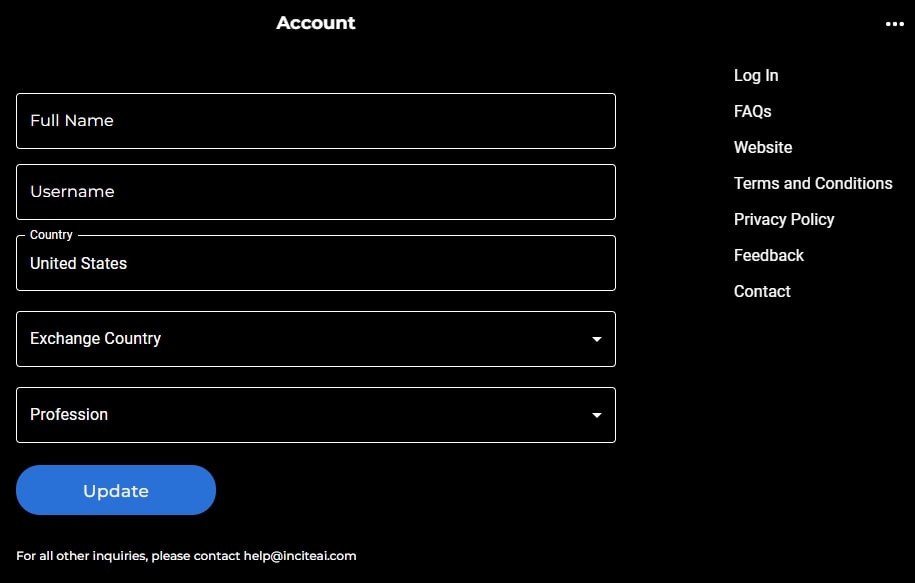20 Pro Info To Picking AI Stock Picker Platform Sites
20 Pro Info To Picking AI Stock Picker Platform Sites
Blog Article
Top 10 Suggestions For Evaluating The Integration Of Ai Stock Analysing Trading Platforms
Integrity and compatibility are two of the primary elements to be considered when evaluating AI software for stock forecasting and analyzing trading platforms. An AI platform that is seamlessly integrated with your current workflows and tools can boost efficiency and increase productivity. Here are our top 10 tips on how you can assess the compatibility and the integration of these platforms.
1. Check Brokerage Integration
Supported Brokers: Ensure that the platform is compatible with your favorite brokerage account or trading platform.
Trade execution: Find out if the platform supports direct trade execution through the integrated broker.
Account synchronization: Make sure that the platform is able to sync in real time balances and positions of your account as well as transaction histories.
2. Check the availability of APIs
API access: Ensure that the platform you choose to use has an API (Application Programming Interface) that allows developers to develop customized applications and streamline workflows.
API documentation: Make sure that the API is well-documented, with clear examples and usage cases.
Rate limits: Determine if the API has reasonable rate limits and is able to handle your anticipated use.
3. Check Third-Party Tool Integrity
Popular tools Check to see if there are any integrations between the platform and tools such as Google Sheets, Excel, or trading robots.
Data import/export: Make sure the platform enables easy export/import data from and to other tools.
Extensions/Plugins: Make sure that the platform works with extensions or plugins for added functionality.
4. Test Compatibility Operating Systems
Desktop compatibility - Ensure that the platform you choose can be used with Windows, macOS and Linux.
Mobile compatibility Check if the platform offers an app for iOS or Android.
Web-based access: Determine whether the platform is access via a browser on the web for more flexibility.
5. Evaluation of Data Integrity Capabilities
Data sources: Ensure the platform integrates with various data sources (e.g. market data providers, news feeds, social media sentiment).
Real-time feeds for data: Check if the platform allows for real-time integration of data in order to give the most current analysis.
Import historical data: Check if the platform allows importing historical data to backtest or analysis.
6. Assess Cloud and On-Premise Compatibility
Cloud-based platforms : the platform is accessible from any location with internet access.
Solutions on-premise: If prefer on-premise deployment, verify that the platform you are using supports it.
Check whether the platform has hybrid options that combine cloud and on-premise capabilities.
7. Check for Cross Platform Syncronization
Device synchronization - Ensure that the platform syncs settings and information across all devices (desktops, mobiles, tablets).
Real-time updates: See if the changes you make to one device instantly show up on other devices.
Access offline - Determine whether you have access to restricted functionality or data even when the platform isn't active.
8. Analyzing the compatibility of trading strategies
Strategies for trading that are automated or algorithmic ought to be supported by the platform.
Custom indicators - Check to see if the platform permits the use of custom scripts and technical indicators.
Strategy backtesting: Check if the platform is capable of back-testing trading strategies using historic information.
9. Assess Security and Compliance
Data encryption: Make sure the platform uses encryption both for data during transit as well as at rest.
Authentication Check to determine if your platform is compatible with an authenticated method that is secure (e.g. 2-factor authentication).
Regulation compliance: Determine if the platform complies with relevant laws (e.g. GDPR, FINRA, SEC).
10. Test Scalability and Performance
Scalability: The platform must be able to handle growing data volumes and users.
Performance under load - Verify that the platform is able to continue responding in conditions of high market volatility.
Utilization of resources: Ensure that the platform makes efficient utilization of resources in the system like memory, CPU and bandwidth.
Bonus Tips:
User feedback: Research reviews and testimonials from users to evaluate the platform's integration capabilities.
Trial period: Take advantage of a trial or demo to discover how the platform can be integrated with other tools and processes.
Customer support: Ensure that the platform offers a robust customer service to address issues related to integration.
You can test the integration, compatibility, and efficiency of AI stock trading platforms by following these guidelines. See the top market ai examples for more advice including ai investing platform, ai stock trading app, ai for stock predictions, ai investing app, ai stock, chatgpt copyright, ai stock trading bot free, ai trade, ai investing app, ai trade and more.
Top 10 Tips To Assess The Scalability Ai Technology For Predicting And Analyzing Trading Platforms
Analyzing the scalability of AI-driven stock prediction and trading platforms is essential to ensure they can cope with increasing data volumes, user demands as well as market complexity. Here are 10 tips for evaluating scaleability.
1. Evaluate Data Handling Capacity
Tip: Make sure the platform you're looking at is able to handle and analyze large datasets.
Why? Scalable platforms have to handle growing data volumes without compromising performance.
2. Test the Real-Time Processing Capability
Tip: Check the capability of the platform to handle real-time information streams, such live stock prices, or breaking news stories.
Why: The real-time analysis of your trading decisions is essential since delays can cause to you missing out on opportunities.
3. Cloud Infrastructure Elasticity and Check
Tip: Determine if the platform uses cloud-based infrastructure, e.g. AWS or Google Cloud.
Why? Cloud platforms are elastic and are able to be scalable up or down according to demand.
4. Algorithm Efficiency
Tip 1: Evaluate the computational efficiency of the AI models being used (e.g. reinforcement learning deep learning).
The reason is that complex algorithms are resource-intensive. So optimizing them will help you scale.
5. Learn more about Parallel Processing and Distributed Computer Systems.
Tip: Check if the platform leverages parallel processing or distributed computing frameworks (e.g., Apache Spark, Hadoop).
Why: These new technologies offer faster data analysis and processing across multiple nodes.
Examine API Integration & Interoperability
Test the platform's ability to integrate external APIs.
Why: Seamless integration ensures that the platform is able to adapt to new data sources and trading environments.
7. Analyze User Load Handling
Utilize a high-traffic simulator to check how the platform responds when under pressure.
What's the reason? The performance of a platform that is scalable is not affected by the rise of users.
8. Assess the effectiveness of Model Retraining and Adaptability
Tip: Examine how often and effectively the AI models are trained with new data.
The reason is that markets change and models must adapt quickly to maintain precision.
9. Check for Fault tolerance and redundancy
Tip - Make sure that your platform has failover and redundancy mechanisms for handling hardware or other software issues.
Why: Downtime is costly for trading. Therefore, fault tolerance is vital to scaling.
10. Monitor Cost Efficiency
Examine the cost of your platform, including the cloud's storage, cloud resources and computing power.
Why: The price of scalability should not be unsustainable. Thus, it's important to balance performance with costs.
Bonus Tip: Future-Proof
Ensure the platform is constructed to integrate new technologies (e.g. quantum computing, quantum computing, advanced NLP) and be able to adjust to regulatory changes.
If you focus on these factors you will be able to assess the capacity of AI stock prediction and trading platforms, making sure they're robust, effective and ready for the future growth. Read the most popular additional reading for site info including ai stock predictions, ai stock price prediction, ai stock analysis, stock predictor, ai options trading, ai stock price prediction, ai options trading, stock predictor, ai stock investing, ai options trading and more.